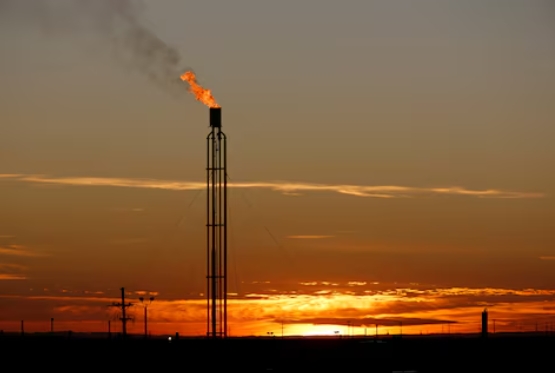New Jersey has declared it will use only zero carbon energy by 2050. Lots of other states and many municipalities have announced similar goals. The difference, according to PV Magazine, is that New Jersey has an actual plan to make its 100% renewable energy goal a reality. Lots of those other plans are larded with flowery phrases but create no policy standards that will make the dream a reality.
Credit: commons.wikimedia.org2050 is the end date for the Garden State plan, but that doesn’t mean it will wait 25 years before implementing major changes. According to a draft of the state’s plan (the final version is due in September), New Jersey will deploy 600 MW of energy storage by 2021 and proposes to have 330,000 light-duty electric vehicles on its road by 2025. It is also targeting 3.5 GW of offshore wind and 2 GW of energy storage capacity by 2030.
The Executive Summary of the draft plan begins,
“There is near unanimous scientific consensus that the global threat of climate change is grave and that it demands swift local action and focused state leadership. However, there is also evidence that New Jersey’s current trajectory and efforts will be insufficient to reach the goals we have established to address climate change, including Governor Murphy’s goal of 100% clean energy by 2050 and the Global Warming Response Act (GWRA) state greenhouse gas emissions reductions of 80% below 2006 levels by 2050. Despite the state’s successes since 2006 in reducing its carbon emissions, this is our current reality and our challenge.”
Job creation in clean energy industries is a central focus of the plan. “Importantly, in embracing this climate challenge, New Jersey is also poised to take advantage of a profound opportunity to expand the clean energy innovation economy, support New Jersey families and create new long-term jobs, and identify least-cost pathways to transition to clean energy.”
The plan identifies seven areas where the state can make significant strides in reducing its carbon footprint. It is not just about generating more renewable energy. The plan encompasses reducing energy consumption whenever possible and using energy more efficiently. Here are the seven bullet points.
Strategy 1: Reduce Energy Consumption and Emissions from the Transportation Sector. In New Jersey, the transportation sector accounts for 46% of the state’s net greenhouse gas emissions, making it the largest emissions source in the state. The transportation sector should be almost entirely electrified by 2050, with an early focus on light-duty passenger vehicles and short range medium and heavy duty vehicles, particularly in environmental justice communities. A focus on EV charging infrastructure is included.
Strategy 2: Accelerate Deployment of Renewable Energy and Distributed Energy Resources. New Jersey should maximize the development of offshore wind and in-state renewable energy generation including community solar and the interconnection of carbon-neutral distributed energy resources to support the economy and increase local jobs, encourage private sector investment, accelerate clean power production, and improve resiliency.
Strategy 3: Maximize Energy Efficiency and Conservation, and Reduce Peak Demand. We must strengthen efforts toward promoting energy efficiency and managing and reducing peak load, including clear energy reduction goal setting and accountability, through financial incentives or consequences for utilities that do not meet those targets, reducing wasted energy through improvements in building thermal envelopes, appliance efficiency, energy benchmarking, equipment controls, strategic energy management, and attention to peak demand reduction, while ensuring access to increased efficiency for all residents so that energy burden disparities are not amplified.
Strategy 4: Reduce Energy Use and Emissions from the Building Sector.Buildings are responsible for a combined 61.7% of the state’s total end-use energy consumption. Given this, the building sector should be largely decarbonized and electrified by 2050 with an early focus on new construction and the electrification of oil and propane fueled buildings.
Strategy 5: Modernize the Grid and Utility Infrastructure. We must plan for, finance, and implement distribution system upgrades that will be required to handle increased electrification and integration of DERs, support bi-directional grid power flow, assess integration of voltage optimization (or Volt/Var Control), and actively engage in transmission planning and siting.
Strategy 6: Support Community Energy Planning and Action in Low and Moderate Income and Environmental Justice Communities. The state has a responsibility to facilitate equal access to and representation of the clean energy economy and all the opportunities and benefits it provides. We will support and incentivize local, clean power generation, especially rooftop solar and community solar, and prioritize clean transportation options in low-and moderate-income and environmental justice communities.
Strategy 7: Expand the Clean Energy Innovation Economy. New Jersey will expand upon its existing 52,000 clean energy jobs to bring cutting-edge clean energy research and development to the state. We must support the growth of in-state clean energy industries through workforce training programs, clean energy finance solutions, and investing in innovative research and development programs. This should include a clean energy workforce needs assessment, a Clean Energy Job Training program to assist current New Jersey workers to pivot their skills as necessary to meet changing industry needs, and a Vocational Training to establish a pipeline of well qualified, modern energy specialists.
PV Magazine sums it up this way. “Not only does this plan look to make New Jersey a leader in the renewable transition nationally, but the job creation that comes with it will be, to say the least, significant.” Indeed. Any plan that omits the job creation piece of the puzzle is missing an important component.
The plan makes clear that adding grid storage, building new transmission lines, and creating new wind and solar facilities may increase the cost of electricity in the first instance, but it says any increase will be more than offset by reductions in overall energy usage. RE detractors like to harp on the first part without ever once acknowledging the second part, or factoring in the economic benefits of a sustainable planet.
It’s hard to generate profits if all your customers are dead.







